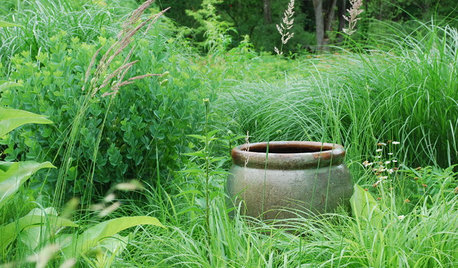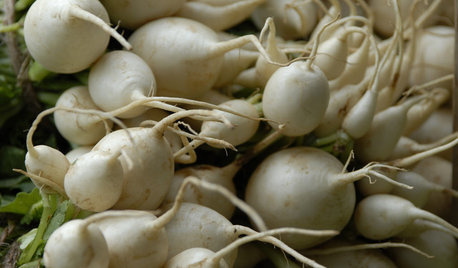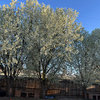How often do you dig/till your gardens?
ianb_co
14 years ago
Related Stories

GARDENING GUIDESWhat's Wrong With My Plant? Leaves Often Hold the Clues
Learn how to identify common plant ailments by reading their leaves
Full Story
GARDENING GUIDESGarden Myths to Debunk as You Dig This Fall and Rest Over Winter
Termites hate wood mulch, don’t amend soil for trees, avoid gravel in planters — and more nuggets of garden wisdom
Full Story
DECORATING GUIDESSimple Pleasures: Digging in the Attic
Sift through forgotten things to bring back memories and inspire stories — and maybe even yield a treasure or two
Full Story
GARDENING GUIDES5 Invaluable Life Lessons From the Garden
The garden is both teacher and healer. Don't be afraid — dig in and reap the benefits
Full Story
GARDENING GUIDESGreat Design Plant: Knock Out Roses
As glorious as their high-maintenance kin for a fraction of the work, Knock Out roses make even beginners look like garden stars
Full Story
NATIVE PLANTSPlant These Fall-Flowering Natives in Early Summer for Pollinator Love
These 3 groups of plants will support masses of beneficial insects come autumn
Full Story
GARDENING GUIDESGreat Design Plant: Milkweed
Quit cringing. This not-weed plant is a sight to behold in the garden, has a delicious vanilla scent and is a magnet for butterflies
Full Story
GARDENING GUIDESTexas Gardener's October Garden Checklist
Earn a "free" bonus by dividing perennials, make planting a priority now for hardy growth next year and keep an eye on your lawn
Full Story
MOST POPULARHow to Start a Cool-Season Vegetable Garden
Late summer and late winter are good times to plan and plant cool-season crops like salad greens, spinach, beets, carrots and peas
Full Story
GARDENING GUIDESCool-Season Vegetables: How to Grow Turnips
Sweeter after a taste of frost, these often-overlooked root vegetables can be a surprisingly tasty part of your fall garden
Full Story0
Sponsored
Industry Leading Interior Designers & Decorators in Franklin County
More Discussions








david52 Zone 6
autodidact
Related Professionals
Oatfield Landscape Architects & Landscape Designers · Towson Landscape Architects & Landscape Designers · Newcastle Landscape Architects & Landscape Designers · Berkley Landscape Contractors · Bowie Landscape Contractors · Fairhope Landscape Contractors · Kaneohe Landscape Contractors · North Haven Landscape Contractors · Richmond Landscape Contractors · South Lake Tahoe Landscape Contractors · West Allis Landscape Contractors · Reisterstown Landscape Contractors · Glen Avon Solar Energy Systems · Compton Solar Energy Systems · Shelton Solar Energy SystemsSkybird - z5, Denver, Colorado
ianb_coOriginal Author
digit
jnfr
Dan _Staley (5b Sunset 2B AHS 7)
sumit.dpfoc
digit
Skybird - z5, Denver, Colorado
cnetter
autodidact
jnfr
billie_ladybug
david52 Zone 6
pumpkin2010
singcharlene